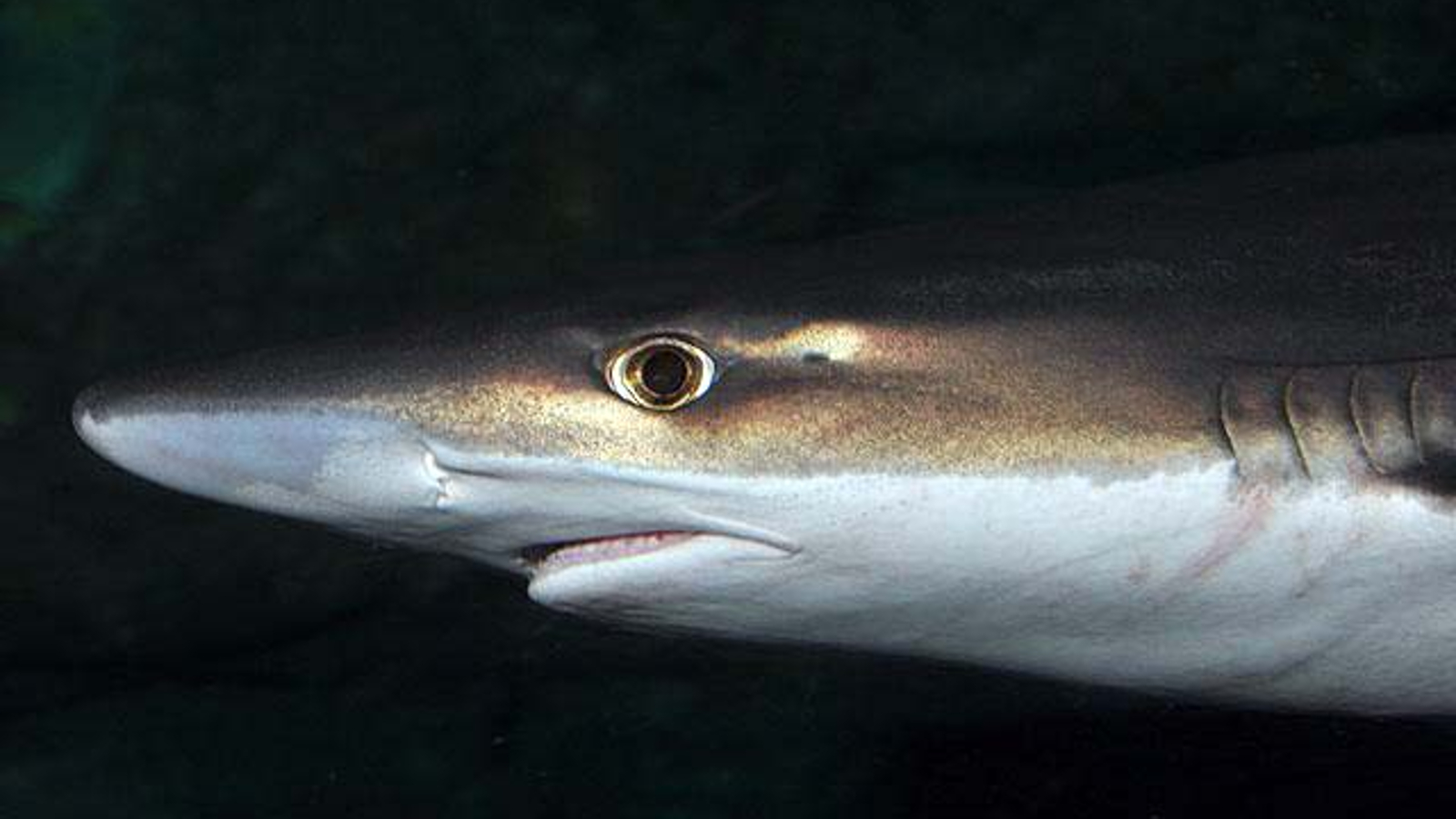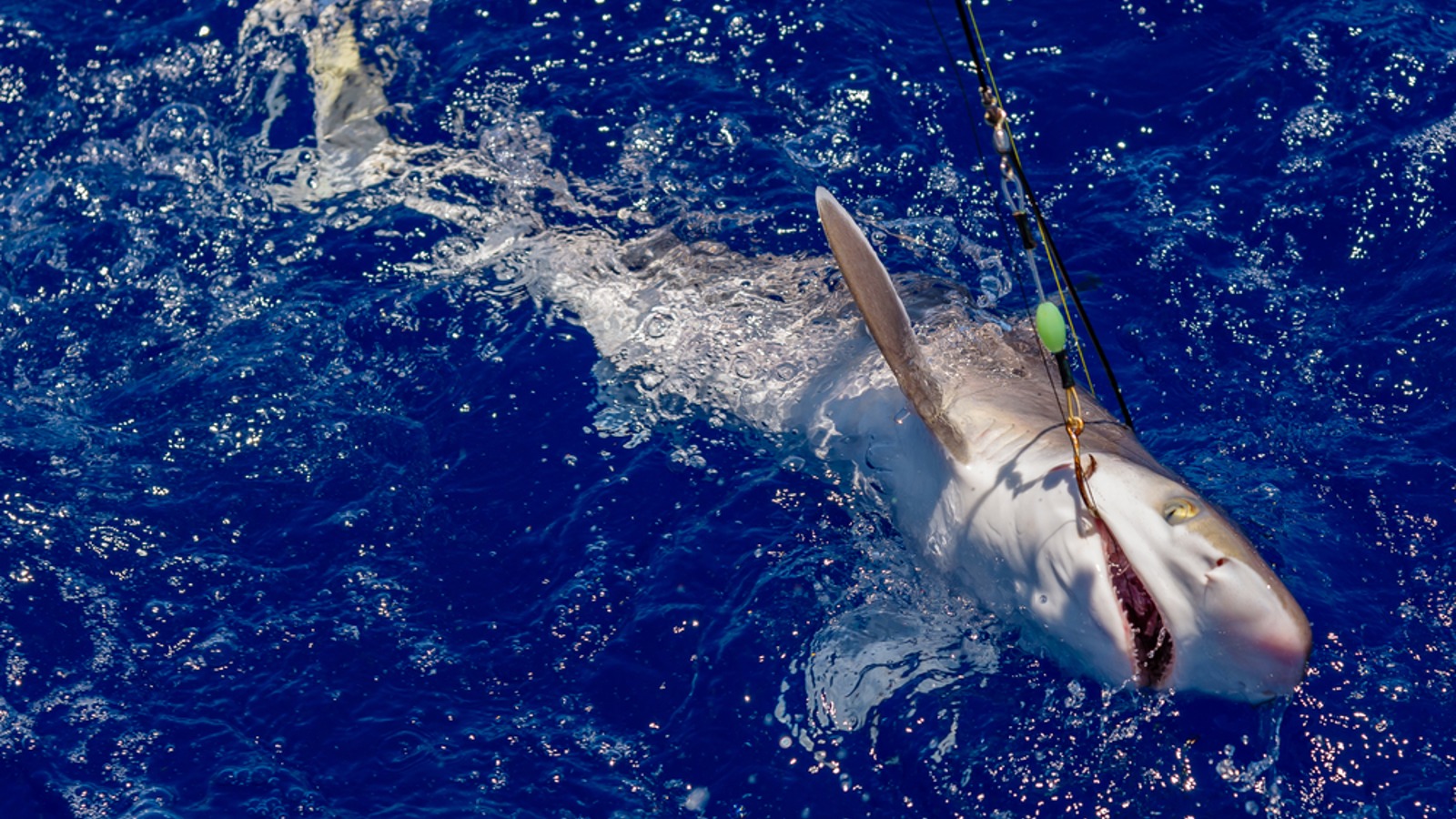Missing man's remains found in shark's belly, but it's 'very very unlikely' the shark killed him
The remains of a missing person from Argentina were recently found inside the belly of a dead school shark. But experts say it is improbable that the shark killed him.

The remains of a missing person in Argentina were recently recovered from the belly of a dead shark. The shark had been caught by fishers near where the man went missing, leading to speculation in the media that the shark may have killed him. But shark experts and police suspect that the man was already dead before the shark ate him.
Diego Barría, a 32-year-old man who lived in the Patagonian province of Chubut, was last seen on Feb. 18, Spanish news site El País reported. Around four days later, local police found Barría's damaged all-terrain vehicle (ATV) along with his helmet, which had been cracked in two, on a nearby beach. But there was no body, which only added to the mystery surrounding the missing man's whereabouts.
But on Feb. 26, local fishers caught three school sharks (Galeorhinus galeus), also known as tope or soupfin sharks, near the beach. When the fishers were gutting the sharks, they found a human forearm, as well as other suspect human remains, in the belly of one of the sharks. The fishers turned the remains over to police, who identified a specific tattoo on the wrist of the forearm that matched one of Barría's tattoos, according to El País. A DNA test will now be carried out to definitively prove that the remains belong to Barría.
However, it is unlikely that the shark killed Barría. Instead, the police suspect that Barría likely died after colliding with a rock while driving the ATV and that his body was washed out to sea, where it was partially eaten by the shark.
Related: In rare attack, great white shark decapitates diver in Mexico. But why?

"In my opinion, that's exactly what happened," Gregory Skomal, a marine biologist at Boston University and head of the shark program at Massachusetts Marine Fisheries, told Live Science in an email. It is "very very unlikely" that the shark killed Barría, he added.
School sharks are medium to large-size sharks found across the globe. The individuals caught by the fishers, including the one that ate Barría's arm, each measured around 5 feet (1.5 meters) long. They are mainly bottom feeders, dining on flatfish and sardines near the seafloor, but they will also target larger fish and squid in the open sea.
Sign up for the Live Science daily newsletter now
Get the world’s most fascinating discoveries delivered straight to your inbox.
Gavin Naylor, a marine biologist at the University of Florida who runs the International Shark Attack File (ISAF) at the Florida Museum of Natural History, agreed that it is highly unlikely that a school shark would attack a human, especially as people are too big to be confused for the shark's normal prey. It is practically "unheard of" for this species to kill people, he told Live Science in an email.
Instead, Naylor and Skomal think that the shark opportunistically scavenged on Barría's body.
"It is well documented that many species of sharks will opt for an easy meal by scavenging" when possible, Skomal said. This can include scavenging on humans, although this is likely "very rare," he added.
School sharks are targeted by fishers for their meat, fins and livers, which are all consumed by humans. As a result, the species is listed as "critically endangered" on the International Union for Conservation of Nature's (IUCN) Red List of Threatened Species.

Harry is a U.K.-based senior staff writer at Live Science. He studied marine biology at the University of Exeter before training to become a journalist. He covers a wide range of topics including space exploration, planetary science, space weather, climate change, animal behavior and paleontology. His recent work on the solar maximum won "best space submission" at the 2024 Aerospace Media Awards and was shortlisted in the "top scoop" category at the NCTJ Awards for Excellence in 2023. He also writes Live Science's weekly Earth from space series.










